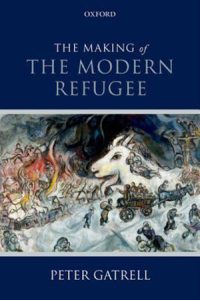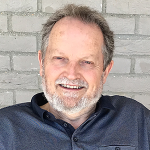The Making of the Modern Refugee

Author: Peter Gatrell
Publisher: Oxford University Press
Year of Publication: 2013
Print Length: 328 pages
Genre: Non-Fiction / History, Migration & Refugee Studies
Area: Africa, India, Pakistan, Palestine / Israel, East Asia, Southeast Asia, Vietnam, Europe
People: Jews, Palestinian, Pakistani, Indian, Vietnamese
Topic: Modernity, Modernism, Modern; Asylum & Asylum Seekers, Refugees & Forced Migration, Asylum & Refugee System, History, History & Origin, Testimonies, Lived Experience, War, Civil War, Development, Cold War & Post-Cold War, State Formation, Revolution, Politics & Power, Decolonization & Anti-Colonization, Fragile State, Partition of India & Pakistan, Refugee Durable Solution
The Making of the Modern Refugee proposes a new approach to a fundamental aspect of twentieth-century history by bringing the causes, consequences and meanings of global population displacement within a single frame. Its broad chronological and geographical coverage, extending from Europe and the Middle East to South Asia, South-East Asia and sub-Saharan Africa, makes it possible to compare crises and how they were addressed. Wars, revolutions and state formation are invoked as the main causal explanations of displacement, and are considered alongside the emergence of a twentieth-century refugee regime linking governmental practices, professional expertise and humanitarian relief efforts.
How and for whom did refugees become a ‘problem’ for organizations such as the League of Nations and UNHCR and for non-governmental organizations (NGOs)? What solutions were entertained and implemented, and why? What were the implications for refugees? These questions invite us to consider how refugees engaged with the myriad ramifications of enforced migration, and thus the significance that they attached to the places they left behind, to their journeys and destinations—in short, how refugees helped interpreted and fashioned their own history. The Making of the Modern Refugee rests upon scholarship from several disciplines and draws upon oral testimony, eye-witness accounts and cultural production, as well as extensive unpublished source material.
Table of Contents
List of Maps and Tables
Abbreviations
Introduction: The Making of the Modern Refugee
PART I: EMPIRES OF REFUGEES
Introduction
1. Crucibles of Population Displacement Before and During the Great War
2. Nation-states and the Birth of a ‘Refugee Problem’ in Inter-war Europe
PART II: MID-CENTURY MAELSTROM
Introduction
3. Europe Uprooted: Refugee Crises at Mid-Century and ‘Durable Solutions’
4. ‘Nothing Except Commas’: Jews, Palestinians, and the Torment of Displacement
5. Midnight’s Refugees?: Partition and its Aftermath in India and Pakistan
6. War and Population Displacement in East Asia, 1937-1950
PART III: REFUGEES IN THE GLOBAL COLD WAR, AND ITS AFTERMATH
Introduction
7. ‘Villages of Discipline’: Revolutionary Change and Refugees in South-East Asia
8. ‘Long Road’: Africa’s Refugees, Decolonization, and ‘Development’
9. ‘Some Kind of Freedom’: Refugees, Homecoming, and Refugee Voices in Contemporary History
Conclusion: Refugees and their History
Further Reading
Index

Peter Gatrell is Professor of Economic History at the University of Manchester. He is primarily a historian of population displacement in the modern world and history of modern Europe, with his commitment to the cultural history of modern war. His research on population displacement has included collaborative research projects on population displacement, state-building and social identity in the aftermath of the First World War and the Second World War. He is the author of a trilogy of books in refugee history, including The Making of the Modern Refugee, published by Oxford University Press in 2013 and described as ‘magisterial’ and ‘a tour de force’. In 1999 Indiana University Press published A Whole Empire Walking: Refugees in Russia during the First World War, which was awarded the Wayne S. Vucinich Prize by the American Association for the Advancement of Slavic Studies for ‘outstanding work in Russian, East European or Eurasian studies in any branch of the humanities or social sciences’ and awarded various prize. His recent book, The Unsettling of Europe: The Great Migration, 1945 to the Present, chosen by the TLS as one of their Books of the Year.
Source: https://research.manchester.ac.uk/en/persons/peter.gatrell & https://research.manchester.ac.uk/en/persons/peter.gatrell
More from Peter Gatrell in this library, click here.
